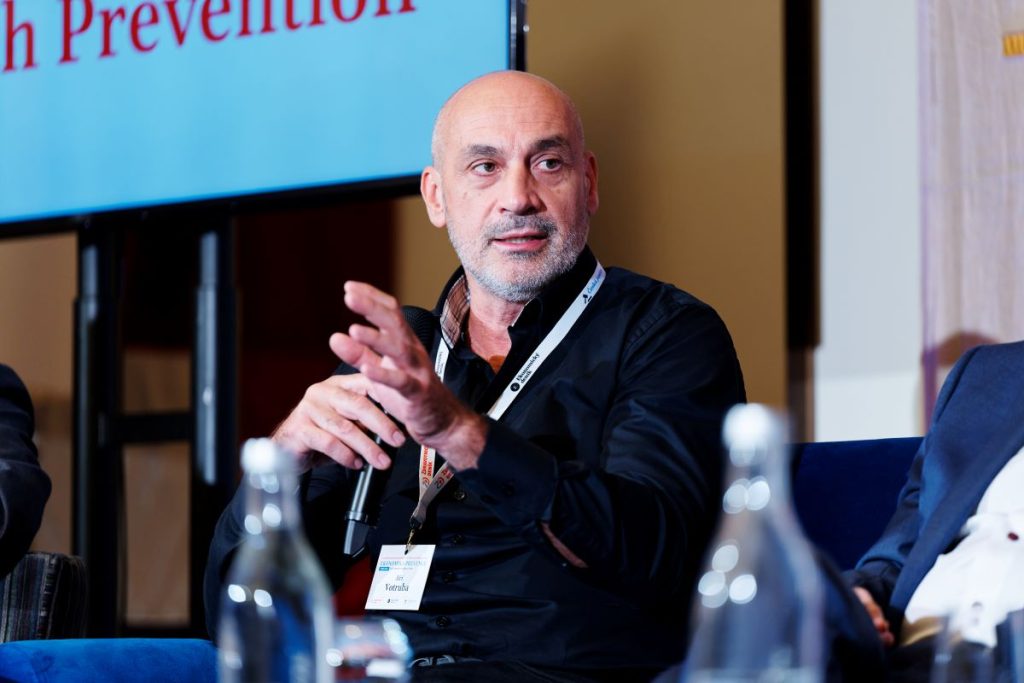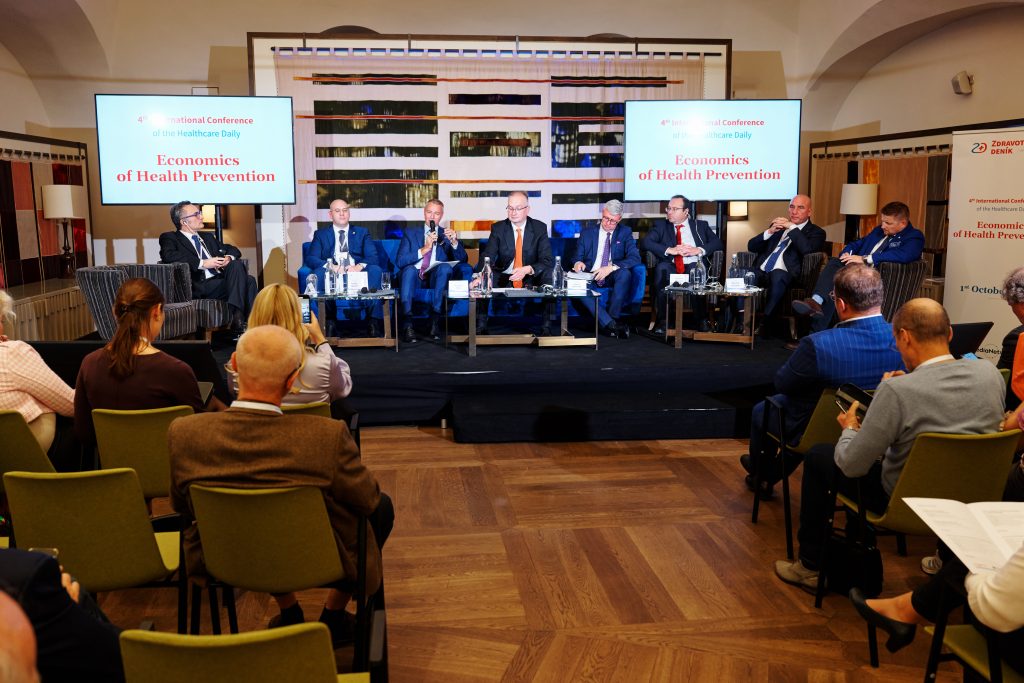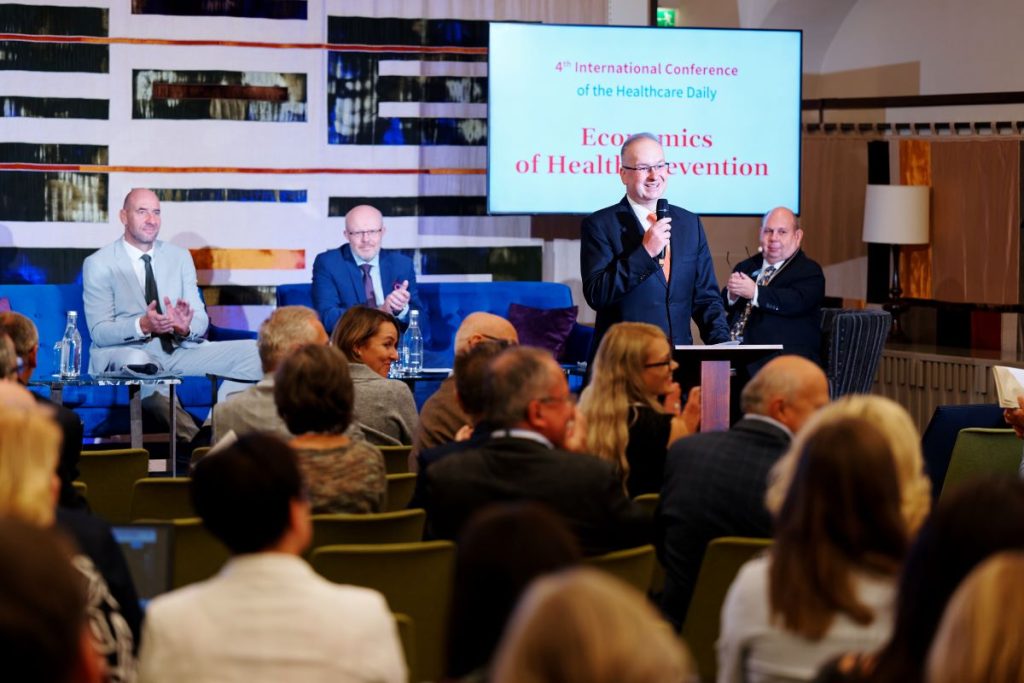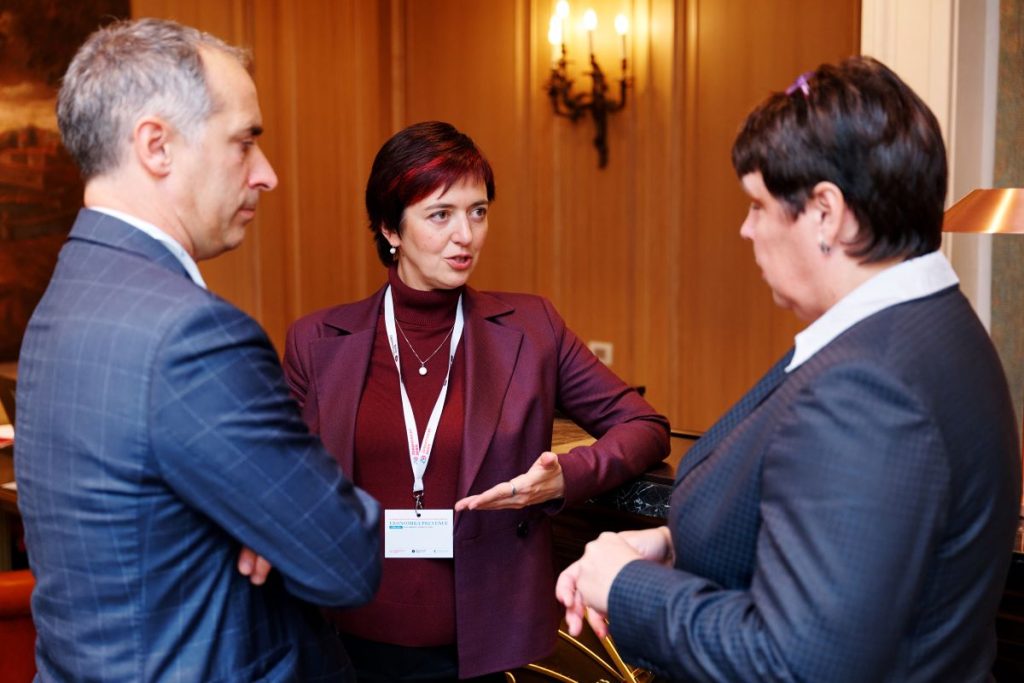Thanks to screening programmes, tens of thousands of lives are being saved that might otherwise have been ended prematurely by cancer. Yet there are thousands of patients are diagnosed too late, when treatment outcomes and five-year survival rates are already dramatically worse. Paradoxically, the situation is very bad for patients who have already received one cancer diagnosis in the past, or are being treated for another chronic disease. It is these people who often drop out of screening and the tumour is detected later than in the general population. How to get the most out of screening was the subject of a panel of experts at the fourth annual international conference, The Economics of Prevention.
Screening programmes save lives, and this has now been quantified. Since the introduction of breast cancer screening, mortality rates have fallen by 32 per cent and 62,000 cases of breast cancer have been detected early between 2000 and 2022. Cervical cancer screening has reduced mortality from the disease by 25 per cent, and incidence by 24 per cent. More than two million cervical cytologies are performed annually, with an abnormal finding rate of approximately three per cent, or about 60,000. Colorectal cancer screening boasts a decrease in mortality from these cancers by as much as 48 per cent and a decrease in incidence by 32 per cent, with 150,000 adenomas and 13,500 carcinomas detected between 2006 and 2022.
“But participation is not optimal. We still have 1,600 newly diagnosed stage three-plus breast cancers a year. The mortality rate for this disease is also 1600. We’re saving tens of thousands of women and thank goodness for screening, but there’s still a little bit of ground to make up. And I am not talking about colorectal cancer,” says Ladislav Dušek, director of the Czech Institute of Health Information Services, who believes that screening also has a huge economic effect.

Today, 70 per cent of women in the target population undergo mammograms, and even 80 per cent of women participate in cervical cancer screening. We are significantly worse off in the case of colorectal cancer, where the participation rate is 30 per cent (although there is still a significant group of people who have undergone a diagnostic colonoscopy in the last ten years and are therefore not screened; moreover, there is no upper age limit and screening would be problematic for older polymorbid patients).
However, it is this screening, if the patient has undergone a colonoscopy, that has the greatest effect—the patient does not get the disease at all because the polyps are removed during the examination. And if the tumour is detected in the first stage, the five-year survival rate is 90 per cent, whereas in the fourth stage it is just over ten per cent. Unfortunately, we still discover 3,500 people a year at stages three or four.
“Fear can be one limitation, which is true with colorectal screening, for example. Colonoscopy is now a safe, quick method that is often done under local anaesthetic, so there is no negative experience for the patient. It is true, however, that the preparatory steps for the examination are not something one would give as a gift. In the case of some types of screenings, such as prostate cancer screening, lack of awareness can be a limitation. And then there is the fact that you have to convince a person who is healthy to have something done at regular intervals that is more or less unpleasant,” says Vlastimil Válek, Czech Health Minister.
Mohlo by vás zajímat
Slovakia has similar population screening programmes. “But we have not solved the education of people. At the same time, films and series are being made in which there might be something that people could learn from. We need to convince people to be screened, and this way we could convince them faster,” suggests Ladislav Slobodník, State Secretary of the Slovak Ministry of Health. According to him, a report about a media-famous couple who decided to have a colonoscopy actually had the effect of raising interest in screening. On the other hand, Mr Slobodník admitted that Slovakia has a capacity problem regarding such examinations.
Dispensarisation at a specialist does not equal screening
Bonuses are a tool to motivate people to take care of their own health. Health insurance companies are already starting to use these—if a person has a preventive check-up with a practitioner or a screening, he or she will receive a bonus for a massage or dental hygiene. The ministry would like to strengthen these tools in the amendment to the Public Health Insurance Act, which is to be debated in the Cabinet.

However, this country has a huge room for improvement with patients who have already been diagnosed with a cancer. In these patients, screening is neglected, so that if they develop a second cancer, it is usually caught at a later stage than in the rest of the population. Today, 22 per cent, or 1,600, of colorectal cancer detections per year occur in people who have had a previous cancer diagnosis—but 54 per cent are detected at an advanced stage.
“Many people live under the assumption that if they have a chronic disease, and cancer even more so, the fact that they are seeing their specialist means they are being monitored. They forget that repeated visits to a specialist do not mean a preventive check-up with a practitioner and cancer screening. So we are discussing with the Cancer Society committee how to change the follow-up of cancer patients to catch a second tumour early,” Minister Válek outlined.
A similar problem applies to people suffering from other chronic diseases. Patients with heart failure under 60 who are followed up by a specialist attend colorectal screening only 20 per cent of the time. “These people tend to be under the care of an outpatient specialist or even a major institute, going to dispensary appointments with an associate professor or professor of medicine. And then they grow melanoma to stage four, where treatment now costs over a million a year, and they die of something you wouldn’t wish on your worst enemy,” says Mr Dušek, adding that 20,000 tumours have been diagnosed in these patients since 2015, of which 2,800 are colorectal tumours (half of which are only discovered at stages three to four).
Improving accessibility
Screening is now coordinated by the National Screening Centre, which has piloted 18 prevention projects over the past three years. In addition, it monitors the quality of screening programmes together with the National Institute for Quality and Excellence in Health Care (NIKEZ). This is particularly crucial for population screening, according to Mr Válek, because some countries have experienced problems with mammography screening, for example, precisely because of the deterioration in quality.
“Yes, we can use artificial intelligence, telemedicine and teleradiology, but only partially, because these avenues have proven to be significantly more expensive, but at the same time deteriorating in quality. Therefore, it is imperative that we implement HTA health technology assessment, including cost-effectiveness, which we have done,” Mr Válek points out.
In addition to this, the staffing and capacity of screening centres needs to be checked at the start of any screening programme. An example is prostate cancer screening, where the original idea of the professional society was modified so that the screening would be carried out on machines with adequate availability.

According to Jiří Votruba, head of the tuberculosis and respiratory diseases clinic at Prague’s Military Hospital, or VFN, the potential of lung screening should also be improved. “With the introduction of this screening, we have an epidemic of solitary lung nodules (a round lesion surrounded by aerated lung parenchyma with a diameter of less than three centimetres, which is not associated with any other pathology, but a small part of them may represent an early stage of primary bronchogenic carcinoma or metastases of other malignancies, ed.), but we cannot diagnose them properly because we do not have the technology needed to do so—in bronchology we do not have navigation technology, which is not covered by health insurance companies. This is an absurd situation. We screen lung tumours to find more solitary lung nodules so that people can survive more tumours, but at the same time we say that we cannot diagnose solitary lung nodules and pay for the diagnosis,” Mr Votruba elaborated.
At the same time, the Ministry of Health is trying to improve the availability of screening tests. “We have started to monitor waiting times for prevention programmes through the Institute for Health Information. In the course of 2023, there were suggestions to improve the disproportionately long waiting times for colorectal screening, so I instructed the ministerial department of European funds and investments to create a subsidy project to strengthen the equipment of colonoscopy workplaces for colorectal screening, as the professional society wanted. This is being implemented,” Mr Válek claims.
Similarly, an audit of the availability of breast cancer screening was carried out, and following its results, the Ministry focused on problematic locations such as Zlín, Jeseník, Bruntál and Karlovy Vary.

At the same time, the spectrum of screening programmes should be further expanded. In addition to the new prostate cancer screening, there are plans to screen for pancreatic cancer, for which a working group is meeting, and for early detection of abdominal aortic aneurysm, familial hypercholesterolaemia, diabetic retinopathy and macular oedema.
But on the other hand, according to the chairman of the Association of General Practitioners, Peter Šonka, it is realistic to set screening programmes. “We are at the limit of what a doctor is able to absorb and offer patients. When I hear that there is going to be screening for hearing disorders in the elderly, it starts to scare me a bit—I think that every GP will recognise a hearing disorder without there being any special screening for it. Not to mention that people also need to be provided with follow-up care, and when I heard that certified ENT clinics would be doing that, I was a little dismayed. So maybe I would take my foot off the gas with screening programs and develop the ones we already have,” Mr Šonka appeals.
Prevention with regard to the patient’s level of risk
But the topic is also the content of preventive screenings at practices. “We are talking with the Association of General Practitioners about how to adjust preventive check-ups to be more individualised according to gender, age and possible chronic diseases,” says Mr Válek.
According to the OECD, preventive check-ups are not sufficiently personalised and do not work sufficiently with individual patient risks. That is why the GPs want to amend the preventive decree so that the scope of the examinations is adjusted. These should now focus on earlier detection of certain diseases such as chronic heart failure, dyslipidaemia, diabetes or chronic kidney disease.
“Today, we have a big gap between 18 and 30 years of age where there is no lab work as part of the checkup, something that would allow early detection of disease. The role of the practitioner, meanwhile, is not only early detection, but managing the patient so that ideally they don’t get into the late stages, which then require further intervention. The outcome of the preventive examination should be a change in the view of the patient at risk and individual risk scaling, as it is no longer meaningful to look at the patient as a hypertensive, dyslipidemic or diabetic. The next step should be to work with a person who has such a defined risk within the framework of disease management of chronic diseases,” says Mr Šonka.
Here too, however, we need to focus on increasing participation. “As we leave GPs for children and adolescents, compliance to preventive check-ups in GPs will break below 50 per cent. In your twenties, when you have no problems, I can understand that. It just doesn’t pick up much later on, even in a population of sixty or seventy plus. It’s because people are recognized in various specialized institutes. This is a challenge for disease management,” Mr Dušek pointed out.

And the problem is also that having your own practitioner is not a given. “One million people in the Czech Republic, ten per cent, do not have a practitioner and therefore no access to primary care. This is a number that should send shivers down the spine of all the creators of the health system. It’s a far cry from any preventive intervention whatsoever for these ten per cent of people,” Mr Šonka argued. Nevertheless, he believes that there are better times ahead—last year, the reimbursement of preventive check-ups was fundamentally changed, which should lead to more practitioners inviting patients for check-ups. “It has forced them to rethink the prioritisation of their activities,” Mr Šonka concluded.
Thanks and acknowledgments for supporting the conference go to the General Health Insurance Company, Ministry of Interior Health Insurance (Czech Republic), Slovak General Health Insurance, and Tiscali Media, ALK, Ewing, EUC, AKESO, Sprinx, the National Sports Agency, and the Dukla Sports Club.
















